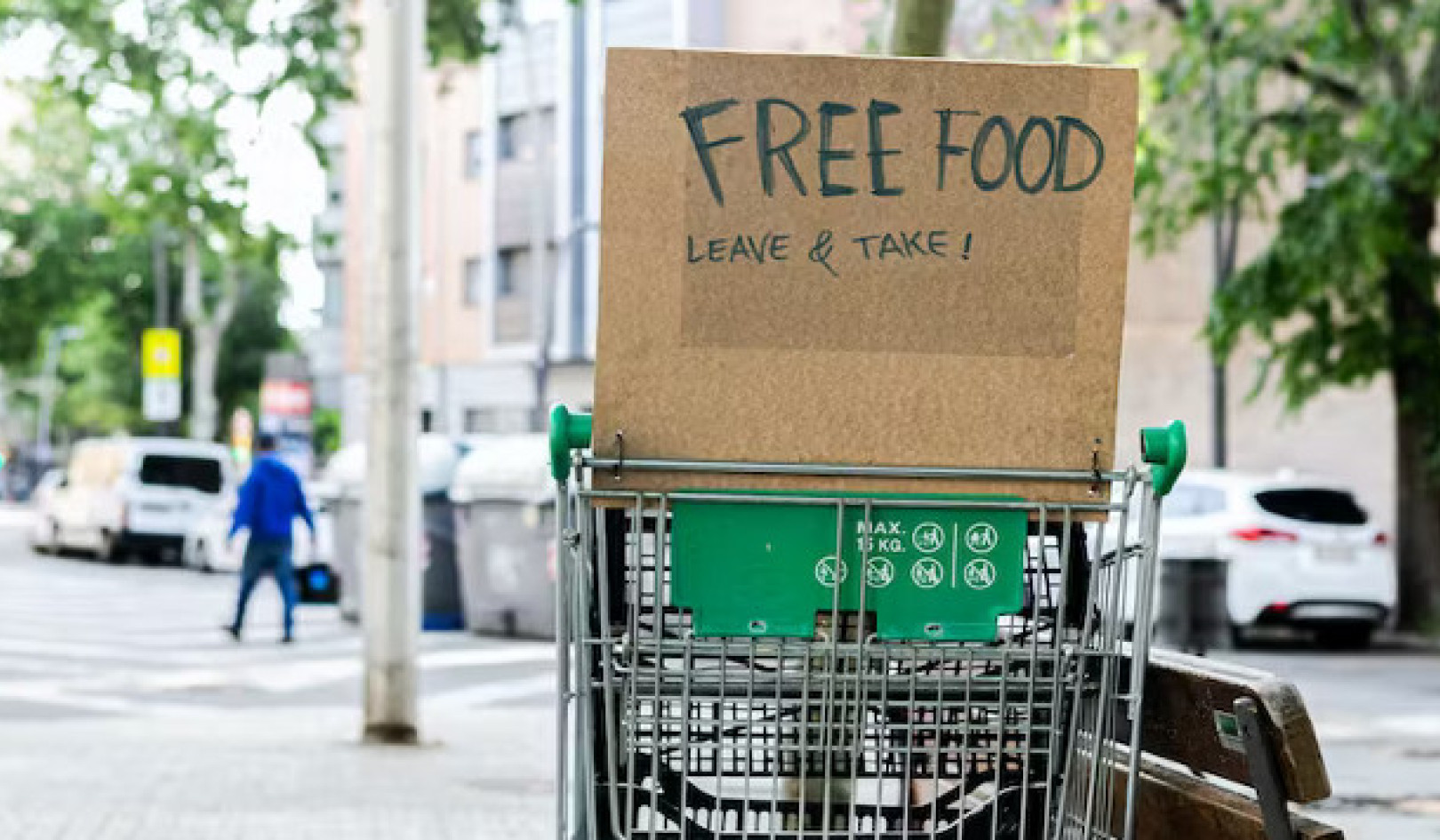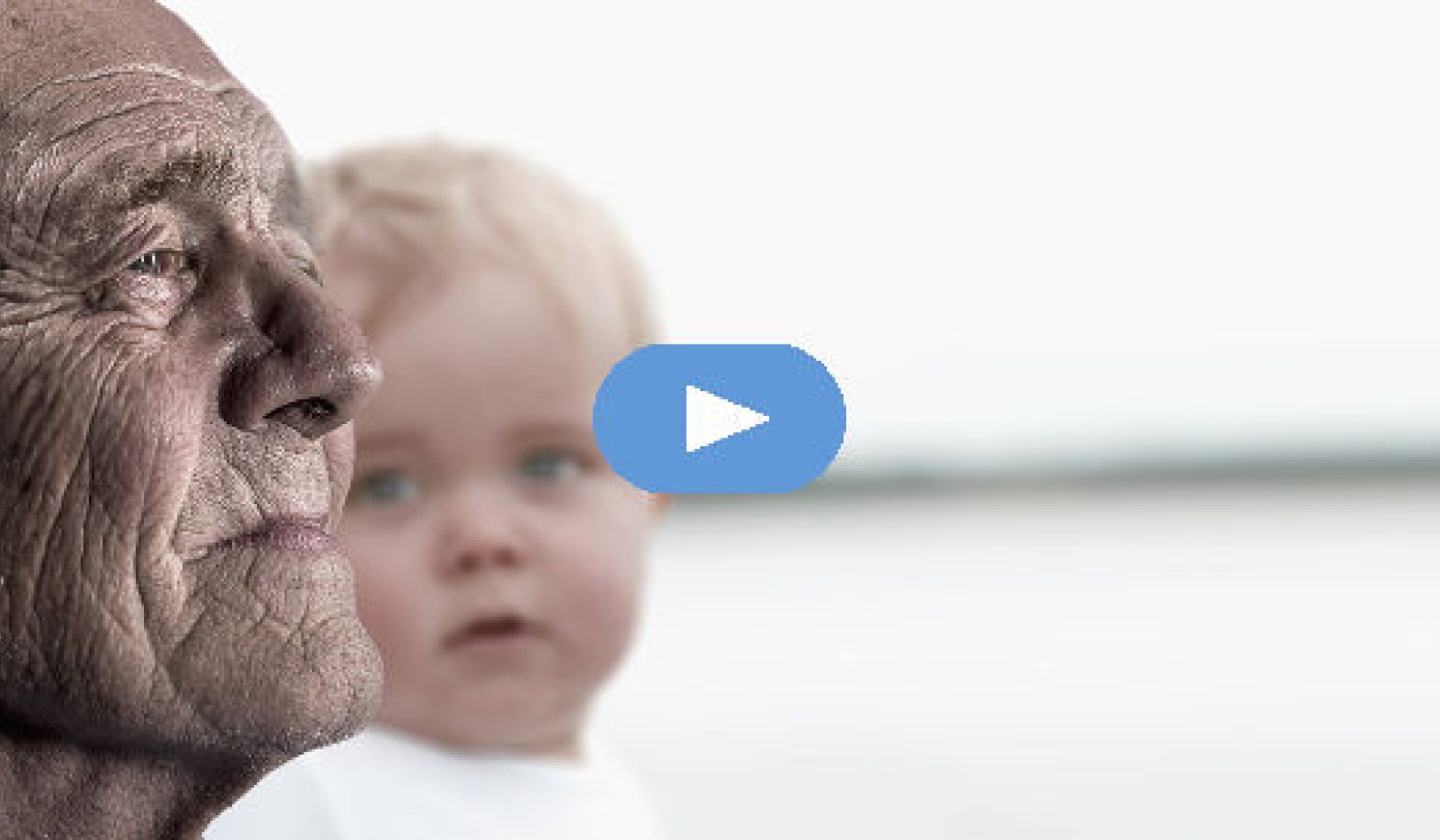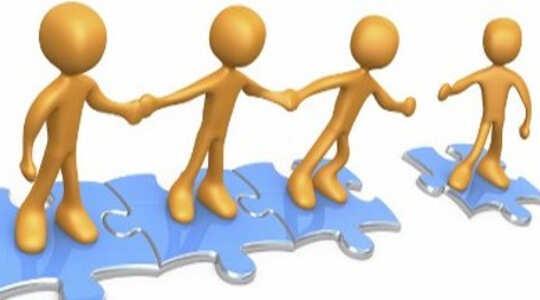
In the U.S., we are conditioned to believe we are separate and fully independent from one another. Many of us do not experience ourselves embedded in a larger community -- instead, we feel we have to fend for ourselves. When we have problems we take the dualistic point of view and affix blame.
Whether we blame ourselves or others, we have objectified and separated everything, thwarting our ability to see the full picture. When we blame others for our problems, we relegate ourselves into a powerless victim position or we blame ourselves and feel inadequate to make change. We do not experience the relationships we are embedded in, or the multiple dynamics that make our problems or can be employed to solve them. We are alone, striving to meet the fictitious images of what we should look like and own for a fulfilled life. Add the violence pervasive on television, in video games, and in the movies, and we have a lethal mixture.
How to Measure a Society's Quality of Life
Children are continual reminders of the joy of being alive. Watching a toddler in the midst of discovery will bring a smile to anyone. Childhood is the time full of pranks and play, magic and mystery. I believe that a society's quality of life is measured by the wellbeing of its children.
Witness: there have been more suicidal deaths by those five to twenty-five years old over the past ten years (approximately 50,000) than U.S. combat deaths in the ten-year Vietnam War (47,355). The image of a child committing suicide horrifies the heart, but in fact, it is coherent with the larger context in which it is taking place. The U.S. Secretary of Health and Human Services tells us: "In our country today, the greatest threat to the lives of children and adolescents is not disease or starvation or abandonment, but the terrible reality of violence." There are more deaths to children by homicide than suicide. Family life doesn't look good -- annually, there are nearly five million partner rapes and physical assaults against women by an intimate partner, and approximately three million perpetrated against men.
This violence takes place in our private worlds, hidden away from one another with no extended family or community to turn to. In other times and other cultures people have turned to their elders. In the U.S., over one and a half million of our elders are in nursing homes. Our grief is not heard; our wounds are not seen. The greatest threat to our wellbeing is not a terrorist living half way across the globe, but what we have become to one another on a daily basis. In fact we live in a war zone. When the violence is hidden in the privacy of strict, culturally imposed silence ("it is none of my business"), it is made invisible. There is no place in which the heart can act and we lose our ability to care for one another.
Caring: A Natural Reflex of the Heart
Caring is a natural reflex of the heart. When we see another in need we respond spontaneously. When faced with a major disaster there is always an outpouring of support. Witness the groundswell of response that happened after 9/11. People rise to the occasion. Everyone pitches in to help. There is a palpable feeling in the air when people see their fates tied together. Everything is seen in a larger context and pettiness falls away. People put their individual concerns aside. A generosity of spirit fills the air. Everyone counts.
In such an atmosphere people relax and let down their guard. When everybody knows they belong -- no matter what -- buoyancy is created. People are relieved of having to expend energy to defend their place, synergy happens, and a convivial, caring, and cooperative spirit infuses the scene. People know they can count on one another.
Building Communities Strong with Loving Relationships
We humans are intrinsically social beings. We need to belong. There are no conditions in which we thrive more than in loving family and community. I believe that when we are deprived of our natural habitat, we go berserk.
If the events of September 11, 2001, have taught us anything, we learned that we are not separate and immune from the rest of the world. What if we experience here in the U.S. what has taken place in Argentina, when the banks locked the doors and froze everyone's accounts? To whom would you turn to survive? Who would turn to you? If we can't answer this with "lots of people," we need to start building communities now -- communities woven strong with the fiber of loving relationships. This is the way to achieve homeland security.
For us to make community we need to break the silence and openly acknowledge what is taking place. With nowhere to turn, more young people die every year than the number of people who fell in the twin towers. We need to change this. Everyone's life counts.
The Key to Survival: Taking Time for Each Other
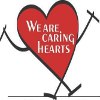 When we are in an energetic field of violence, coercion, and control, we find ourselves in one kind of territory; if we are in an atmosphere of shared care we are in quite another. Love and care create energy fields we would all prefer to live in. What if we could rely on one another all the time? We are called to create community, move out of isolation, and connect with one another instead of fearing each other. Doing so not only will save children's lives, it will save our own. People who live in community, have intimate relationships, and serve the larger good live longer, and I might add, have more fulfilling lives. We need to take the time for each other -- our survival depends on it.
When we are in an energetic field of violence, coercion, and control, we find ourselves in one kind of territory; if we are in an atmosphere of shared care we are in quite another. Love and care create energy fields we would all prefer to live in. What if we could rely on one another all the time? We are called to create community, move out of isolation, and connect with one another instead of fearing each other. Doing so not only will save children's lives, it will save our own. People who live in community, have intimate relationships, and serve the larger good live longer, and I might add, have more fulfilling lives. We need to take the time for each other -- our survival depends on it.
The question becomes -- how do we create fields of energy that lift all of us up? This is challenging given the condition of the world. Just like pain, our first reaction is to pull back. Hearts are soft, sensitive organs; we put up shields to protect ourselves. We don't share our vulnerabilities. The problem is that it is this very sharing that opens the heart. Peace is more than the absence of war.
Maintaining a Belief in Humanity
Over the past decade, I have consulted with many organizations seeking to become multicultural and more equitable. I have worked closely with agencies that provide support for victims of domestic violence. This is heartfelt work that addresses a great need -- as you might imagine from the statistics above. The sobering paradox is that I have found more distrust among women in this arena than in any other setting.
In one organization, when we conducted our initial interviews, we asked people to describe the agency's culture. Women used terms like: "the Gestapo," "people being disappeared," or "getting chewed up and spit out." This was not a description of the conditions that battered women had to contend with, but their description of relations inside the agency. I believe that unless we are very mindful, we take on the energies we are immersed in, on a daily basis. It is difficult to maintain a belief in humanity when picking up the wounded in battle after battle. But this is exactly what we need to learn to do.
Keeping an Open Heart when Faced with Inhumanity
It is equally a challenge to keep an open heart when faced with inhumanity. Denial causes us to shut down, dissociate and deaden ourselves; we cut ourselves off from fullness of being. The opposite holds the promise of healing. What we need to do is create energy fields that glow with authentic loving energy. The Inner Witness will be of great help because in spacious awareness we can both hold the enormity of suffering and continue to keep the heart open. Whether we experience violence directly in our lives or not, we need to create a fresh atmosphere of truth in which our culture can breathe.
Occasionally in meditations, we are asked to go to an imaginary place that is peaceful and serene. Usually people imagine being in a beautiful natural setting. For most of us, when we imagine a peaceful place, there are no people there. It is time for us to turn this around; create peace with each other. Imagine fierce peace -- so enticing that people are inspired to join in, rather than challenge it.
Creating Moments of Shared Vulnerability & Appreciation of One Another
It doesn't take rocket science to figure out what we want. Ask yourself which moments that you have shared with others have made your heart sing. Even if they have been few and far between, what is important is not how many you have had, or how long they lasted, but to recall how it felt at the time. What was true about the setting? For me, there is a spontaneity and joy present. There is a fluid nature in our interactions, a shared vulnerability and appreciation of one another. When we look deeply, we can discover what kind of atmosphere made it possible, focusing on what took place between people.
These are the environments we want to create. They teach us how to weave strong webs of connection. The process itself will create community. The solutions to our malaise are not private ones. We are called to act together.
We are all equipped with what it is going to take: hearts -- big hearts. It does not take new technology, but it does take commitment, time, and patience. The reward: wholeness, authentic relations with ourselves, our families and our communities -- and saved lives.
Big, Hearts -- Strong Communities
What we focus on is what we get. We need visions from which to draw -- visions that affirm our common humanity, otherwise we will reproduce the same patterns. As with all work with inner consciousness, one needs to find positive points of reference. We can create contexts that inspire the heart. One way is to host a gathering for people who would like to share stories of what matters to them.
I suggest that you invite a few friends, your family, or even a few families from the neighborhood to come together and share. Intergenerational groups are great. An ideal number would be five to seven people, though more or less works fine too. Explain that the reason to get together is to enjoy one another, get to know each other more deeply, and have meaningful connections. For those who have been meditating with others, expand your practice to include sharing heart stories as described below.
Sharing Heart Stories & Listening with Your Heart
 Sit in a circle together -- in a circle everyone is equal, all voices count. Then go around and take turns sharing stories of positive moments in your lives. They needn't be particularly profound, just moments that have made the heart smile -- short stories or long ones. Stories open the heart. Share moments that made your heart smile in regards to your children or other loved ones; share stories about someone in your life you consider a role model -- someone with a great big heart.
Sit in a circle together -- in a circle everyone is equal, all voices count. Then go around and take turns sharing stories of positive moments in your lives. They needn't be particularly profound, just moments that have made the heart smile -- short stories or long ones. Stories open the heart. Share moments that made your heart smile in regards to your children or other loved ones; share stories about someone in your life you consider a role model -- someone with a great big heart.
Stories have their own pace to them, so these stories are for the sharing, not to get to the point or punchline. These stories take listening with heart. Usually five or ten minutes is an ample amount of time for each person. Some circles choose not ever to interrupt, others may prefer to be able to occasionally ask questions that elicit more details, further drawing out one another's stories. For instance, ask, "What was that like?" "What was the atmosphere like?" "What do you suppose people were feeling that made them able to be that way?" or "What kind of connection did people have?"
Don't respond to other's stories with your own opinion or experience. Listen -- soak in the stories, feel them in your heart. Let them just hang in the air. Bear witness to them. Keep the storyteller the focus of attention. Discussions create a different kind of energy field.
You can share stories about receiving or offering kindness, or stories of courage, or reconciliation, or love. You want stories, not reports. Tell about times that depict the best of what it means to be human. These stories will lift everyone's spirits and build a positive field. They will also offer much needed hope in these perilous times.
If the group is larger, or the stories longer than the evening can hold, break down into smaller groups so that everyone gets time to tell their whole story. Then come back as a full circle and share the shining moments and the hope they inspire. People will feel uplifted after hearing these stories. The room will fill with lots of positive points of reference.
After the stories, do an Energy Circle in which each of you can ask for the specific qualities you would like to cultivate in your lives now . This will enable you to begin to live into the changes you want to make. Before you know it, these changes will manifest in your life both in how you are in the world and in what happens to you. While in the Circle, remember to channel energy to people and places on the planet that could use some healing.
Cultivating New Habits of the Heart
When we surround ourselves with these stories, they create another kind of energy field, one in which we can cultivate new habits of the heart. If you keep meeting with each other in this way, you will develop deep bonds. These are the kinds of relationships that get strong enough that you'll come to trust that you are there for each other when the going gets rough. The energy field you create with this kind of sharing is durable. It will weather the storms. It invites deeply honest communication. There is room to share our vulnerabilities and space to work through conflict. In these settings you can reflect together on bigger questions that we all face.
In addition to creating contexts that build life-affirming fields of energy, I believe it is also necessary to take a close look and reflect upon the cultural norms we in the U.S. may have taken for granted. Reflecting on the codes we live by, that is the values beneath our actions, will show if they are grounded in a spirit of mutuality. Negative beliefs that go unnoticed produce experiences that we do not want. When they are brought to the surface we can do some Mental Housecleaning. And with mindfulness, we can withdraw their lifeblood by simply not acting on them.
Reprinted with permission of the publisher,
Sourcebooks, Inc. ©1984, 2003.
www.sourcebooks.com
Article Source
Working Inside Out: Tools for Change
by Margo Adair.
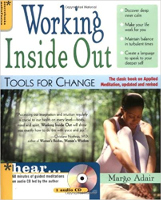 The classic book on practical meditation, updated and revised. Originally published in 1984, Working Inside Out is one of the first books to bring pragmatic meditation techniques to westerners. Now, for the first time, the classic meditation book is paired with a specially created audio CD of guided meditations. Margo Adair teaches the reader to use symbols that make meditation available to even the most restless and busy people.
The classic book on practical meditation, updated and revised. Originally published in 1984, Working Inside Out is one of the first books to bring pragmatic meditation techniques to westerners. Now, for the first time, the classic meditation book is paired with a specially created audio CD of guided meditations. Margo Adair teaches the reader to use symbols that make meditation available to even the most restless and busy people.
The book includes more than 45 guided meditations, a select number of which are contained on the 72-minute audio CD.
About the Author
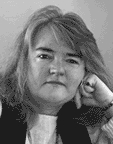 Margo Adair, founder of Tools for Change and co-director of the Tools for Change Institute, has been in the forefront of exploring the connections between consciousness, politics and spirituality. Developer of Applied Meditation, since 1975 she has woven together political, psychological, and spiritual perspectives for personal, interpersonal, and planetary healing. She is co-author of numerous articles, including two pamphlets: The Subjective Side of Politics and Breaking Old Patterns, Weaving New Ties. This work reveals that the particularity of what is left out of public life by the demands of assimilation are exactly what is needed to provide the grace and grit to meet the demands of the times and reclaim humane ways of being. She passed away, surrounded by friends, in 2010.
Margo Adair, founder of Tools for Change and co-director of the Tools for Change Institute, has been in the forefront of exploring the connections between consciousness, politics and spirituality. Developer of Applied Meditation, since 1975 she has woven together political, psychological, and spiritual perspectives for personal, interpersonal, and planetary healing. She is co-author of numerous articles, including two pamphlets: The Subjective Side of Politics and Breaking Old Patterns, Weaving New Ties. This work reveals that the particularity of what is left out of public life by the demands of assimilation are exactly what is needed to provide the grace and grit to meet the demands of the times and reclaim humane ways of being. She passed away, surrounded by friends, in 2010.




















